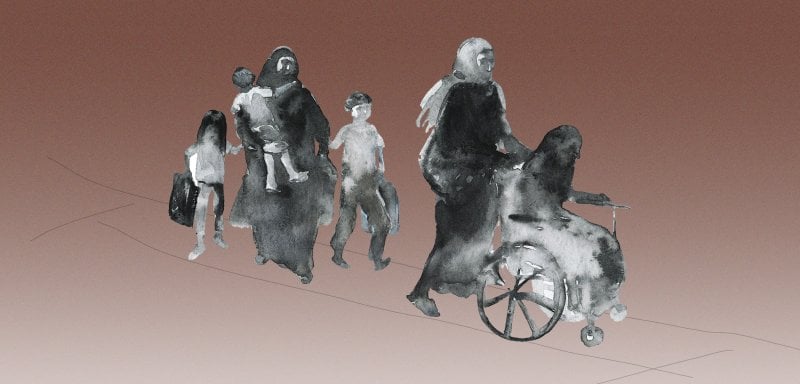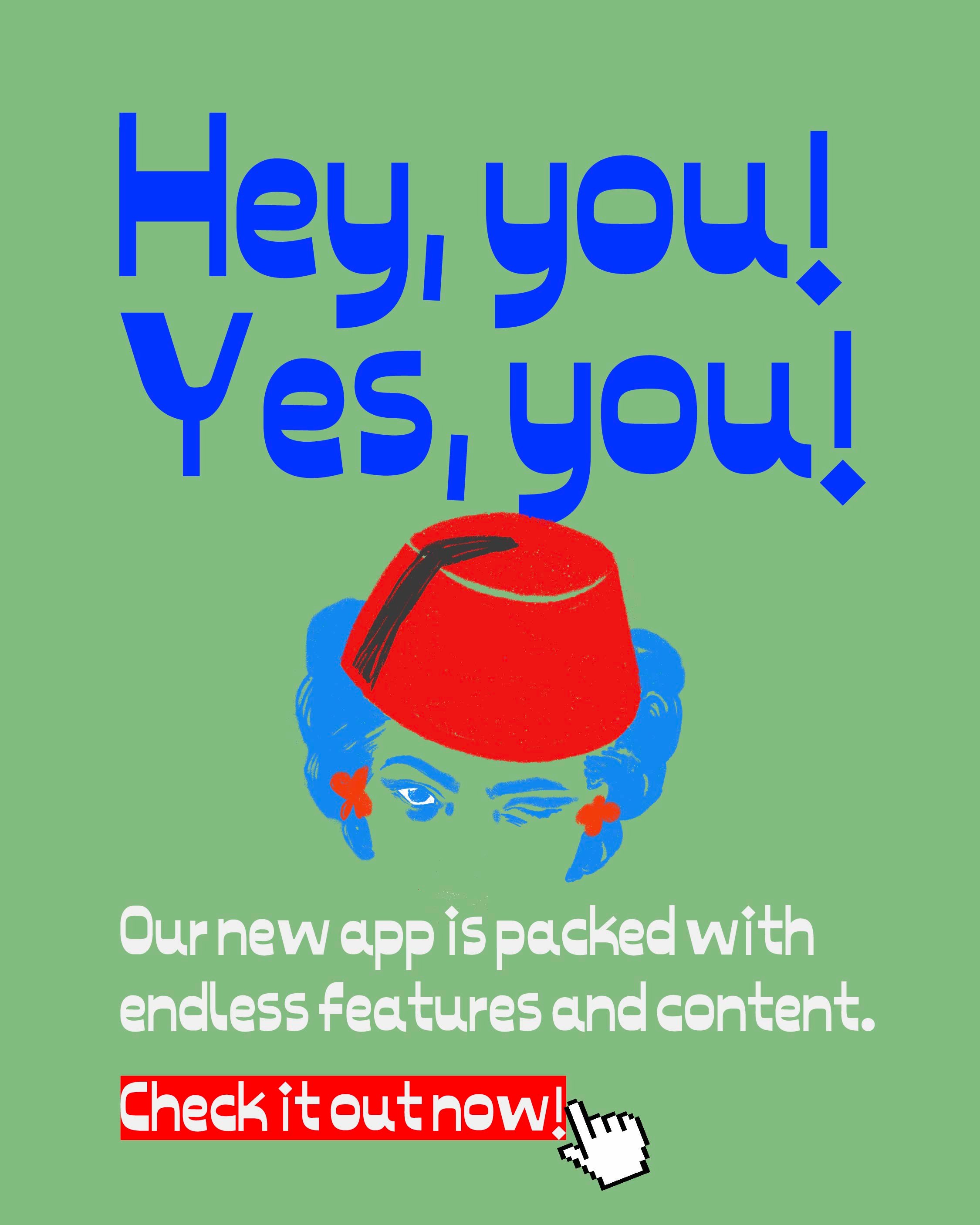Your screen is constantly flooded with images of children wrapped in white cloth, bones on display, and their eyes vacant. In Gaza, horror is unfolding pixel by pixel in real time. People ask: how did this happen while we all watched? As if by the constant circulation of suffering, we expect justice, but all that this imagery has done is make horror banal. The spectacle may encourage empathy, but it strips away context, creating victims of an unknown and ambiguous cruelty.
In a world saturated with content, feeling is mistaken for action, and grief gets distorted into resistance. Charles Baudelaire observed this in his intimate journals. “It is impossible to glance through any newspaper…Without finding on every line the most frightful traces of human perversity,” he wrote, aiming at the moral detachment of the contemporary bourgeois class, whom he accused of casually digesting distant atrocities during breakfast.
Gaza does not need an audience that consumes its suffering; it needs us to target its supply chain.
More than a century later, Susan Sontag revisited Baudelaire's insight in her book, “Regarding the Pain of Others.” Sontag reflected on his critique of the bourgeois class, casually and passively consuming horror with their morning coffee, which, she argues, had deepened its resonance in the 20th century. The spectacle of distant suffering, once confined to newspapers, was then saturated by television screens. Now, in the digital age, Baudelaire's observation has applied to something even more grotesque: an endless scroll of carnage, where genocide in Gaza is algorithmically intercepted with curated advertisements and influencer marketing.
Sontag also warned her readers that consuming images of suffering without the corresponding context risks aestheticizing pain. That photography of atrocities can evoke pity or horror, but not necessarily understanding or action, suggests that such an aesthetic works by isolating pain from its historical and political roots. This presents the documented devastation as a symbol of typical human misery, an imminent natural disaster rather than the consequences of our policies and entrenched global systems and structures.
But Baudelaire’s framing is a political victory for the systems responsible — the aestheticization of pain that Sontag describes is not a passive byproduct of photography, but a functional requirement of capitalist-imperialism. These systems rely on the perception of crises like famine in Gaza as isolated tragedies to be mourned and managed with aid, rather than as the logical, even intended, outcomes of a project that treats war as a profitable investment and human life as collateral. We see horrific images of children’s bodies being pulled out of the rubble. But we are not seeing the weapons manufacturer, the shareholder dividends, or the geopolitical strategy of displacement that the destruction serves.
Baudelaire's observation has applied to something even more grotesque: an endless scroll of carnage, where genocide in Gaza is algorithmically intercepted with curated advertisements and influencer marketing.
The viewer's role is therefore a passive one: merely to feel or express sadness—what they call raising awareness—to donate intermittently, never challenging themselves to think about why this is happening and who profits from it. And thus, these images are wielded as tools of depoliticization, replacing productive action with a momentary feeling.
“Harrowing photographs do not inevitably lose their power to shock,” Sontag observed. “But they are not much help if the task is to understand. Narratives can make us understand. Photographs do something else: they haunt us.”
It is the ubiquitous nature of these images and videos from Gaza that has enabled a cycle of helplessness, whereby the viewer grows cynical—and bored. For the Western eye, this cycle is underpinned by a dissonant privilege: the freedom to turn off the screen or scroll to the next post without truly understanding the weight of the photograph presented to them. This aesthetic of an oft-described ‘humanitarian crisis’ demands nothing of its audience beyond the witnessing of pain and terror; the viewer maintains their moral compass while detaching themselves from their complicity in material struggle.
“Compassion,” Sontag warned, “is an unstable emotion.” But such an illusion of shared empathy is no longer confined to the Western spectator. It now exists among Arab audiences, too. In the West Bank, for instance, canceling festivals, refraining from shared photos on Instagram, or publicly grieving becomes a measure of your solidarity. The insistence that one must only feel guilty enough for moral alignment and sufficient activism allows us to mistake mourning for tangible resistance. This emotional register, although valid and sometimes necessary, risks replacing our political engagement. Many may claim that “they wish they could do more.” Still, their expressions of solidarity often begin and end there, in the ineffectual grief they’ve publicly expressed, which fails to articulate or pursue any radically imaginative alternatives. This empathy, held securely at arm's length, centers the viewer, not the struggle.
While common in leftist spaces across the world, capitalism, imperialism, and white supremacy remain topics excluded—or diluted—from mainstream media discourse. When these structural realities are engaged with to incite action, they are frequently dismissed or accused of ideological extremism. This refusal to engage with the reality of such systems reflects a broader commitment to sustain the very violence that is being denounced.
The viewer's role is therefore a passive one: to merely feel or express sadness, what they call raising awareness, to donate intermittently, never challenging themselves to think about why this is happening and who profits from it.
Israel’s genocide of Palestinians in Gaza and its engineered famine further reveal the hyper-commodification of warfare under the late stages of capitalism. Israel’s military-industrial complex, backed by American and European capital, treats Palestine as both a laboratory and showroom, field-testing AI targeting systems, such as The Gospel and Lavender, and urban warfare strategies that will later be sold to authoritarian regimes containing and punishing populations in the Global South. Meanwhile, several private equity firms and conglomerates hold millions of stocks and shares in the arms manufacturing companies orchestrating the destruction on our screens, our passive expression of “look at what’s happening!” ensuring nothing more than shareholder returns.
As Sontag noted, every nation wants its suffering to be seen as singular, which isolates the cause and obscures its place within a broader matrix of imperialist violence. By recognizing the common enemy—imperialism—the plight of the Sudanese or Congolese is no longer separated from the Palestinian struggle, but rather understood as an expansion of our political horizons, enabling cross-cultural alliances and strategies grounded in the real, hard work of dismantling systemic oppression everywhere, rather than just clicking donate on a crowdfunding website.
So, what does it mean to witness a genocide in real time and still do nothing? It means we have accepted the most insidious lie of the spectacle: that watching is a form of solidarity. We have mistaken Sontag’s “unstable emotion” for political action. The answer to “how can this happen while we watch?” is that our watching has been engineered to be useless. The algorithm that packages Gaza’s trauma between an advertisement and a vacation photo is not a neutral tool; it is a political instrument. It teaches us to consume pain and scroll on, ensuring our horror never becomes a threat to the system that produces it.
Therefore, the transition from voyeurism to ethical witnessing is not about feeling more. It is about breaking the script of consumption. This begins with a radical shift in our engagements. The moral act is not just about sharing an image, but framing it by accompanying it with a caption like “this bombing was carried out with a U.S.-made JDAM. The company that produces it, Boeing, is a major donor to key senators. This isn't just a tragedy; it's a policy choice.” We don’t need a heartbreak emoji.
The answer to “how can this happen while we watch?” is that our watching has been engineered to be useless. The algorithm that packages Gaza’s trauma between an advertisement and a vacation photo is not a neutral tool; it is a political instrument.
For Palestinians, it means resisting the isolation of our grief. When we see the same imperial logic in Sudan and Congo, our struggle ceases to be a singular image on a screen and becomes a shared front. This is not to dilute our cause, but to arm it with a broader, more strategic understanding of the enemy. For other spectators, it is recognizing that a targeted boycott (such as the BDS movement) is material opposition to an algorithmic scroll, disrupting the system's economy rather than merely observing it. A five percent drop in arms manufacturers’ stock price is a more profound expression of solidarity than one thousand shares.
Gaza does not need an audience that consumes its suffering; it needs us to target its supply chain. The violence continues not because of our witness to the atrocities committed, but because a profitable helplessness has been engineered. The political leaders who authorize the bombs are insulated from our outraged posts, and complex financial networks shield the corporations making a profit.
Our responsibility is to make the mechanisms of genocide so visible that complicity becomes too hard to ignore by naming its architects and bankrupting its beneficiaries. The goal is not to overwhelm with horror, but to target with clarity and to ensure that every boardroom that profits from this violence, every politician who votes to fund it, finds their own reality disrupted by the consequences. We don't need to stop the images. We need to make the machinery behind it impossible to ignore or operate.
Raseef22 is a not for profit entity. Our focus is on quality journalism. Every contribution to the NasRaseef membership goes directly towards journalism production. We stand independent, not accepting corporate sponsorships, sponsored content or political funding.
Support our mission to keep Raseef22 available to all readers by clicking here!
Interested in writing with us? Check our pitch process here!



